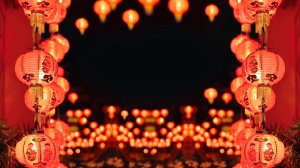Why Do Different Continents Celebrate the New Year in Unique Ways?

The celebration of the New Year is a universal tradition, but the ways in which people across continents mark this special occasion are diverse and fascinating. These unique customs reflect cultural heritage, historical influences, and local beliefs. Exploring new year traditions across continents reveals how deeply rooted these celebrations are in community identity and values.
Asia: Vibrant Festivals Marking Renewal
In many Asian countries, the New Year is celebrated with vibrant festivals that emphasize renewal and good fortune. For example, the Chinese New Year involves the iconic dragon dance, red decorations symbolizing luck, and family reunions featuring traditional foods like dumplings. Similarly, Thailand celebrates Songkran with water fights symbolizing cleansing and fresh beginnings.
Europe: Historical Roots and Symbolic Foods
European New Year traditions often have historical roots combined with symbolic practices. In Scotland, Hogmanay includes torchlight processions and singing “Auld Lang Syne” to honor friendships past. Many countries enjoy eating specific foods believed to bring luck; for instance, Italians eat lentils to symbolize prosperity for the coming year.
Africa: Spiritual Rituals and Community Gatherings
Across Africa, new year celebrations frequently incorporate spiritual rituals alongside communal festivities. In Ethiopia, Enkutatash marks their new year with church services followed by gift-giving among children. Communities gather to sing traditional songs and dance around bonfires as a way to welcome blessings for the future.
North America: Diverse Customs Reflecting Cultural Melting Pots
North America showcases a blend of traditions reflecting its multicultural population. The famous Times Square ball drop in New York City epitomizes modern celebrations worldwide. Meanwhile, many Hispanic communities celebrate with “Las Doce Uvas,” eating twelve grapes at midnight for luck each month of the coming year.
South America: Passionate Celebrations Filled With Color
In South America, new year festivities burst with color and passion. Brazilians wear white clothing symbolizing peace while jumping over seven waves as an offering to sea goddess Yemanjá during their beach celebrations. Fireworks light up skies across cities like Buenos Aires where tango music drives lively parties into dawn.
New Year traditions around the world highlight humanity’s shared desire for hope, prosperity, and connection even though they manifest uniquely according to culture and continent. Understanding these customs enriches our appreciation of global diversity while reminding us that welcoming a fresh start is a universal joy.
This text was generated using a large language model, and select text has been reviewed and moderated for purposes such as readability.











